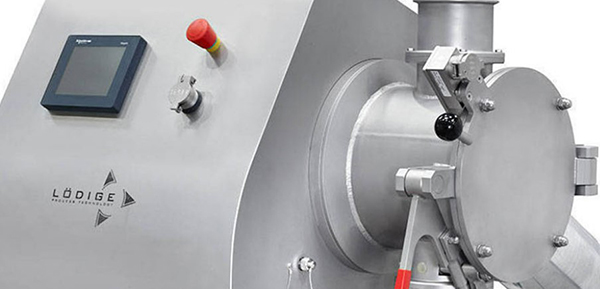PLOUGHSHARE MIXERS

Guaranteed Lödige quality
Attractive value for money
Functional design
Ideal for your product and process development
Rich accessories
MACHINE TYPE
The Lödige laboratory mixers of the types L1, L5, L10, L20 and L50 have a total volume of 1, 5, 10, 20 or 50 l according to their product name. They combine the usual mixing quality with a wide range of equipment for adapting to a wide variety of requirements.
The ploughshare mixer works according to the centrifugal and whirling process introduced into mixing technology by Lödige. Equipped with tools that are precisely tailored to the respective task, you get mixtures of the highest quality.
In a horizontal, cylindrical drum, ploughshare blades rotate close to the wall, the peripheral speed and geometric shape of which are designed in such a way that they throw the mixing components radially out of the product bed into the free mixing space against the gravitational force and at the same time move them in an axial direction. The blade shape also creates a suction for the particles away from the drum wall - the so-called lift-off. The mixing elements are shaped and arranged in such a way that both reliable product transport and sufficient back-mixing are guaranteed.
The application-specific design of the mixing tools and adjustments to the mixer shaft speed allow the Lödige Ploughshare Mixer to be used very flexibly, whether for processing bulk materials (powdery, granular, fibrous) or for processing pumpable masses.
Components with extremely different bulk densities and structures can also be mixed with one another.
The optional installation of cutter heads in the mixing drum increases the local turbulence in the mixing zone extremely. This ensures that even the finest particles are mixed in the smallest quantities and also enables agglomerates to be broken down into primary particles.
The mechanically generated fluidized bed ensures increased separation of the particles, especially in the headspace of the mixer; the surfaces of the individual particles are therefore optimized for contact with liquids, which often makes their homogeneous, lump-free admixture and distribution possible in the first place.
With the laboratory mixer with a container volume of 50 l, the housing can be moved sideways without further assembly, thus enabling easy, free access to the technical area.
Unlike the larger laboratory mixer models from 5 l, the addition of liquids and a resulting granulation or coating is not possible with the L1 type.